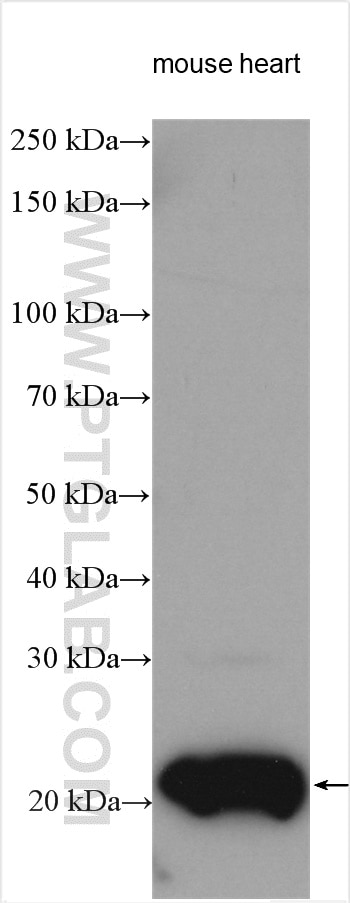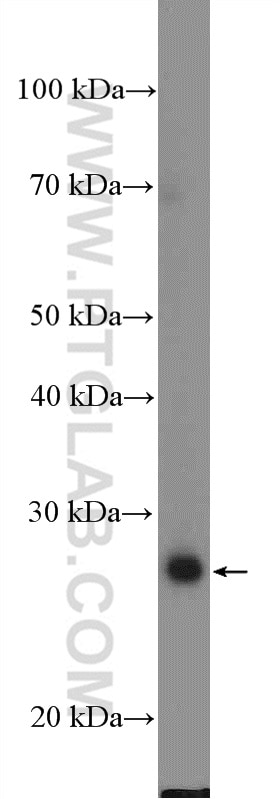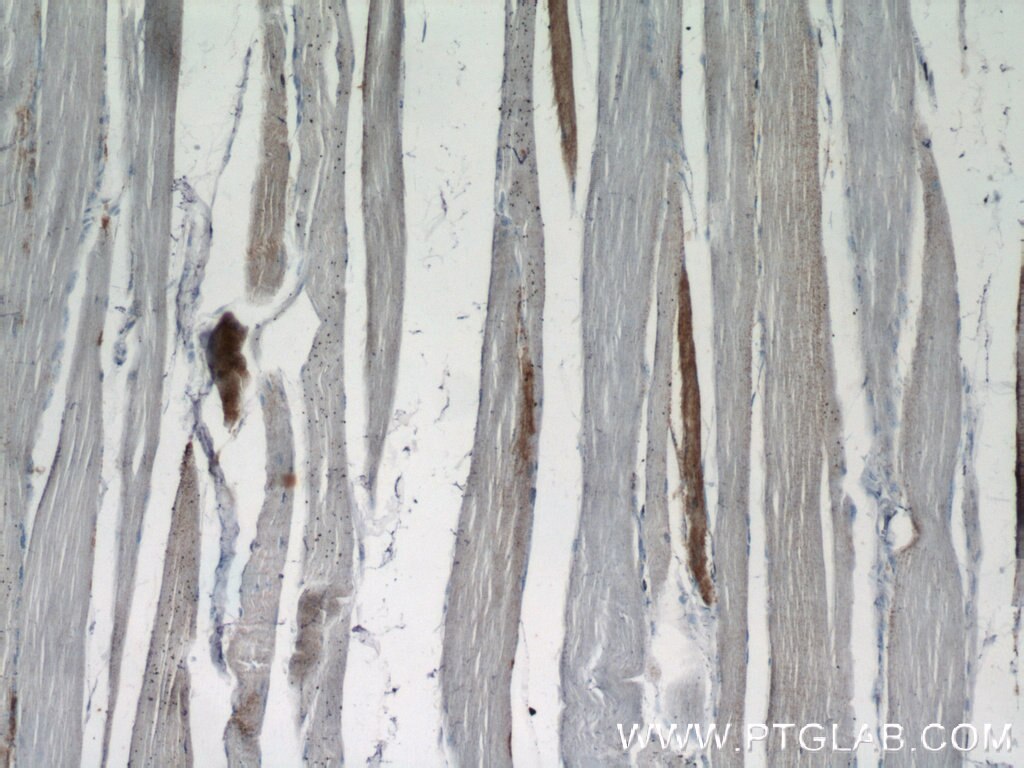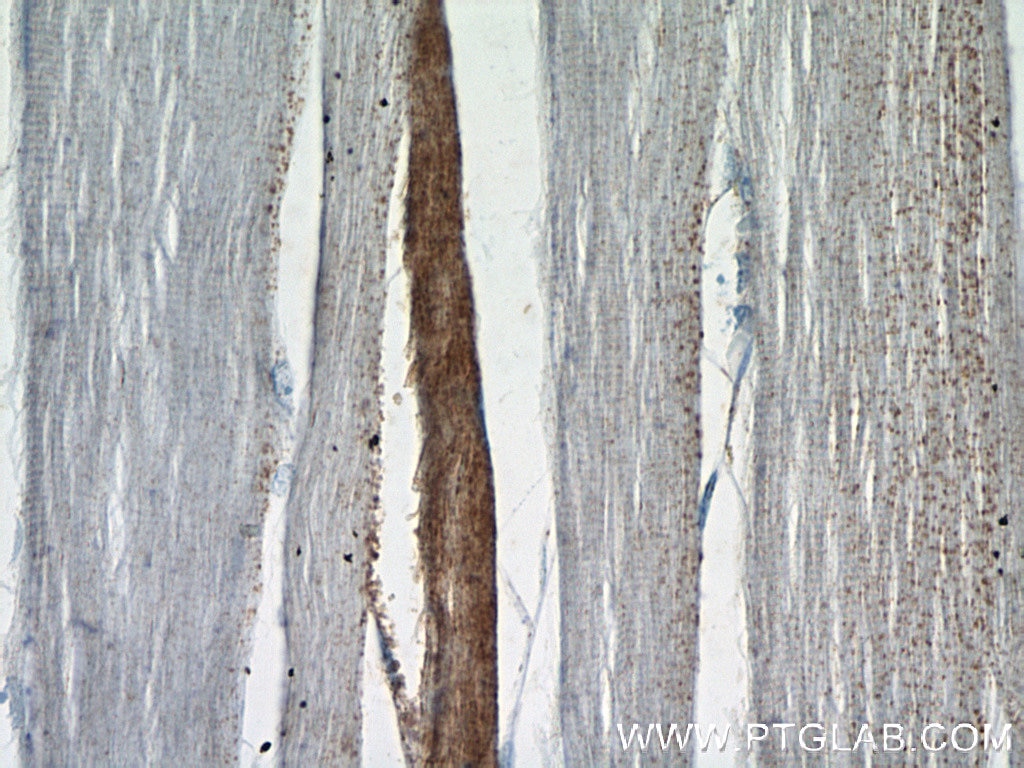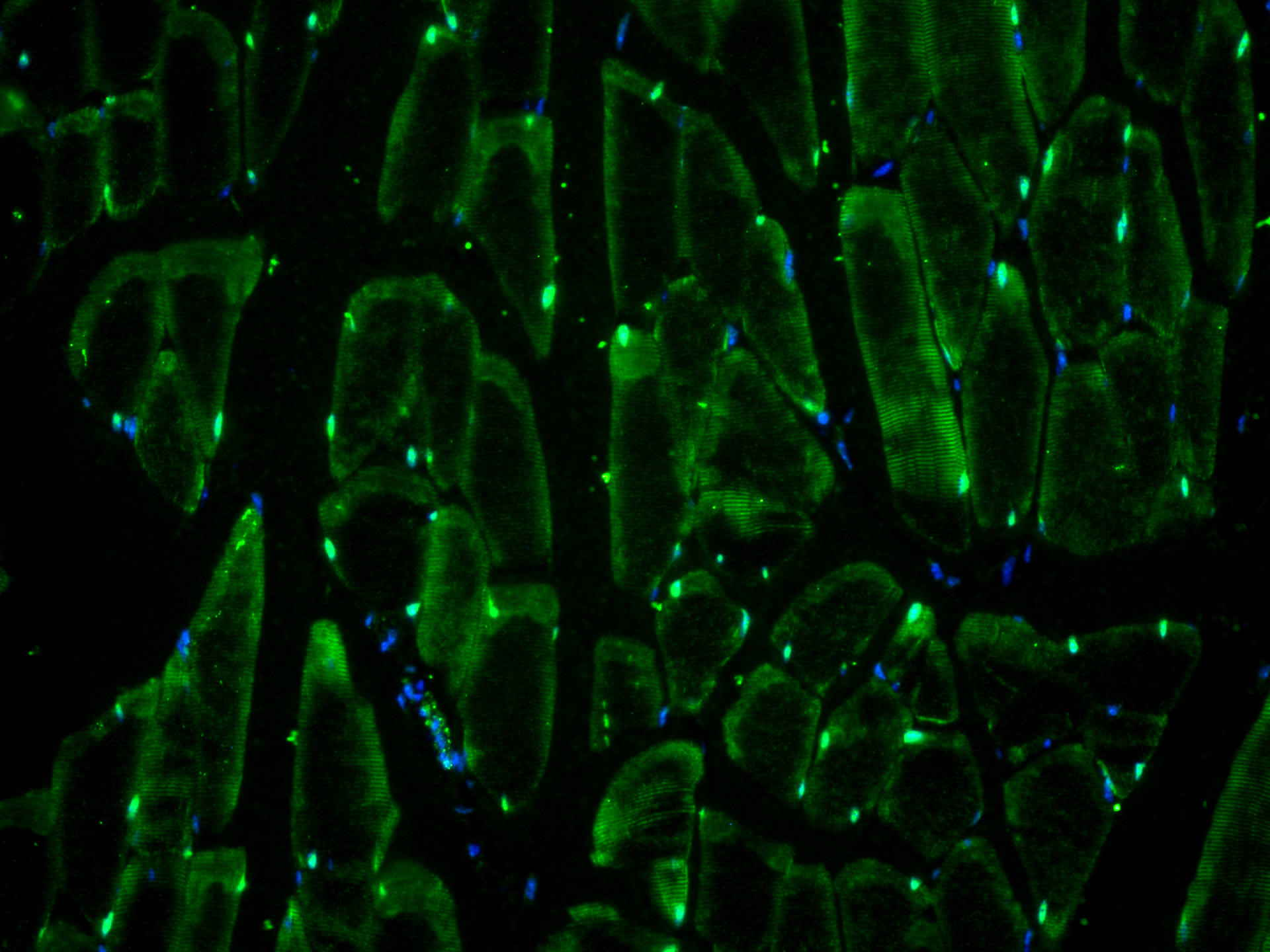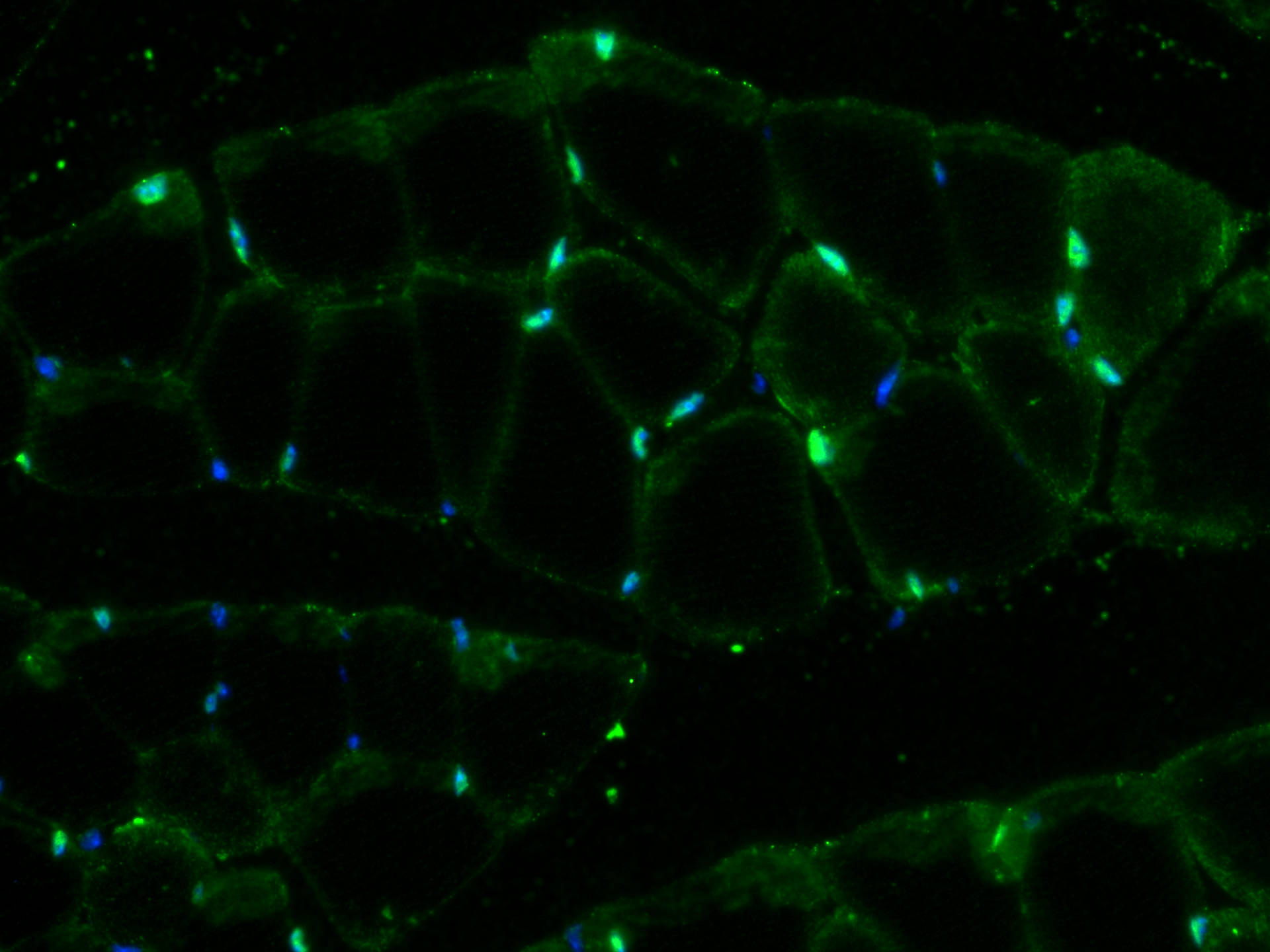- Phare
- Validé par KD/KO
Anticorps Polyclonal de lapin anti-RBM24
RBM24 Polyclonal Antibody for WB, IF, IHC, ELISA
Hôte / Isotype
Lapin / IgG
Réactivité testée
Humain, rat, souris et plus (1)
Applications
WB, IHC, IF-P, RIP, ELISA
Conjugaison
Non conjugué
N° de cat : 18178-1-AP
Synonymes
Galerie de données de validation
Applications testées
| Résultats positifs en WB | tissu cardiaque de souris, cellules HeLa |
| Résultats positifs en IHC | tissu de muscle squelettique humain il est suggéré de démasquer l'antigène avec un tampon de TE buffer pH 9.0; (*) À défaut, 'le démasquage de l'antigène peut être 'effectué avec un tampon citrate pH 6,0. |
| Résultats positifs en IF-P | tissu de muscle squelettique de souris, |
Dilution recommandée
| Application | Dilution |
|---|---|
| Western Blot (WB) | WB : 1:500-1:1000 |
| Immunohistochimie (IHC) | IHC : 1:20-1:200 |
| Immunofluorescence (IF)-P | IF-P : 1:50-1:500 |
| It is recommended that this reagent should be titrated in each testing system to obtain optimal results. | |
| Sample-dependent, check data in validation data gallery | |
Applications publiées
| KD/KO | See 1 publications below |
| WB | See 2 publications below |
| IHC | See 1 publications below |
| IF | See 7 publications below |
| RIP | See 1 publications below |
Informations sur le produit
18178-1-AP cible RBM24 dans les applications de WB, IHC, IF-P, RIP, ELISA et montre une réactivité avec des échantillons Humain, rat, souris
| Réactivité | Humain, rat, souris |
| Réactivité citée | Humain, poulet, souris |
| Hôte / Isotype | Lapin / IgG |
| Clonalité | Polyclonal |
| Type | Anticorps |
| Immunogène | RBM24 Protéine recombinante Ag12871 |
| Nom complet | RNA binding motif protein 24 |
| Masse moléculaire calculée | 191 aa, 20 kDa |
| Poids moléculaire observé | 20-27 kDa |
| Numéro d’acquisition GenBank | BC104808 |
| Symbole du gène | RBM24 |
| Identification du gène (NCBI) | 221662 |
| Conjugaison | Non conjugué |
| Forme | Liquide |
| Méthode de purification | Purification par affinité contre l'antigène |
| Tampon de stockage | PBS avec azoture de sodium à 0,02 % et glycérol à 50 % pH 7,3 |
| Conditions de stockage | Stocker à -20°C. Stable pendant un an après l'expédition. L'aliquotage n'est pas nécessaire pour le stockage à -20oC Les 20ul contiennent 0,1% de BSA. |
Informations générales
RNA-binding proteins have a pivotal role in post-transcriptionally regulating gene expression. During early development they exhibit temporally and spatially regulated expression pattern, and affect the proteome of a single cell by controlling alternative splicing, transport, localization, and stability of their target RNAs [PMID:22510371]. Their expression are tissue-specific, and their crucial influence on the protein set-up especially in muscle cells has become recognized recently [PMID:21982546]. RBM24 is one RNA-binding protein and plays a fundamental role in regulating cardiac gene expression, sarcomeric assembly, and cardiac contractility and may thus represent a novel pathway to cardiomyopathy [PMID:20338237].
Protocole
| Product Specific Protocols | |
|---|---|
| WB protocol for RBM24 antibody 18178-1-AP | Download protocol |
| IHC protocol for RBM24 antibody 18178-1-AP | Download protocol |
| IF protocol for RBM24 antibody 18178-1-AP | Download protocol |
| Standard Protocols | |
|---|---|
| Click here to view our Standard Protocols |
Publications
| Species | Application | Title |
|---|---|---|
Elife Dual expression of Atoh1 and Ikzf2 promotes transformation of adult cochlear supporting cells into outer hair cells. | ||
Development Mosaic CRISPR-stop enables rapid phenotyping of nonsense mutations in essential genes. | ||
Sci Rep Rbm24 displays dynamic functions required for myogenic differentiation during muscle regeneration.
| ||
Dev Dyn Expression patterns of Rbm24 in lens, nasal epithelium and inner ear during mouse embryonic development. | ||
Mech Dev The RNA-binding protein Rbm24 is transiently expressed in myoblasts and is required for myogenic differentiation during vertebrate development. | ||
J Mol Med (Berl) Mechanism of METTL14-mediated m6A modification in non-small cell lung cancer cell resistance to cisplatin |
